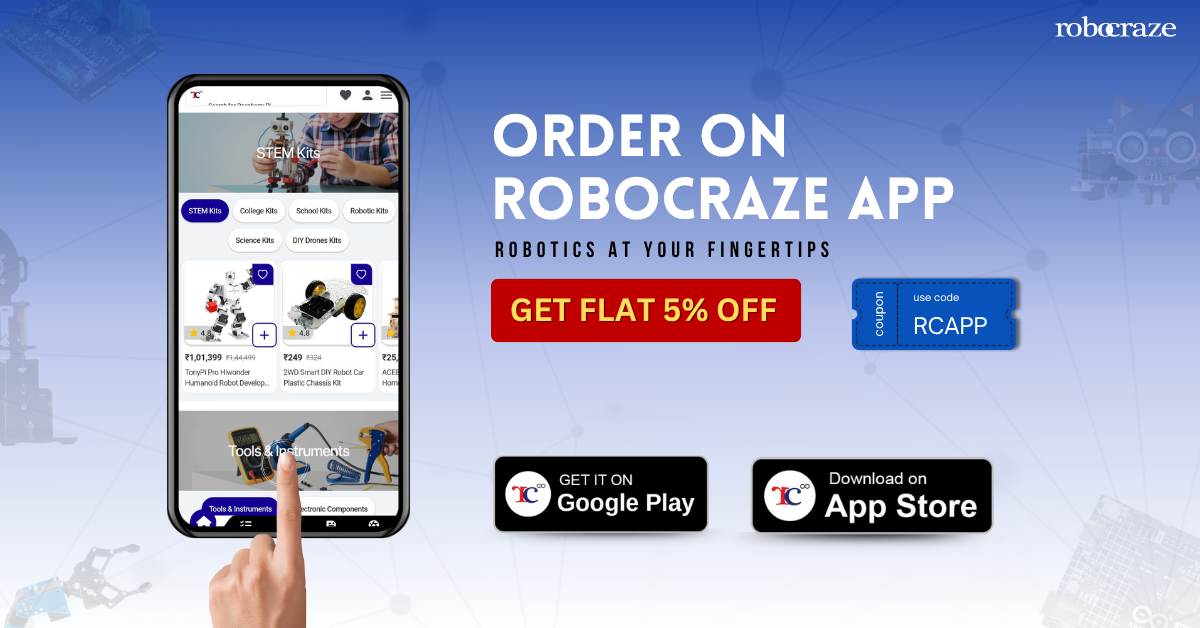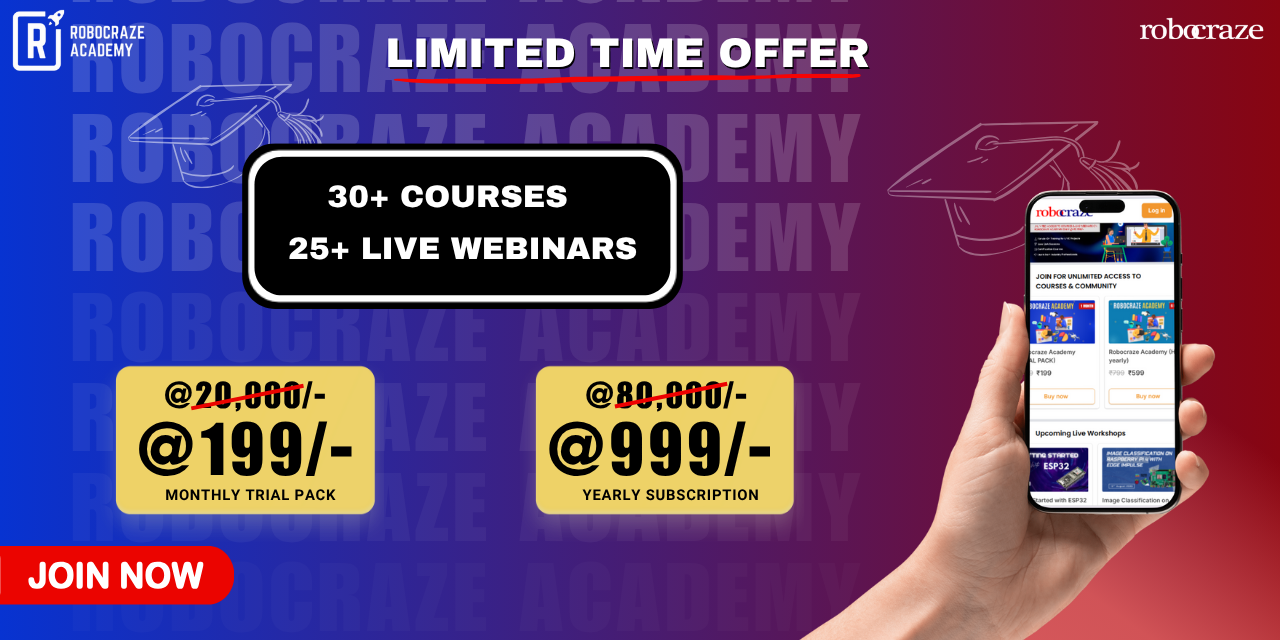Official Arduino Nano RP2040 Connect Development Board with Header
The Official Arduino Nano RP2040 Connect with Header is the only connected RP2040 board, offering an exceptional blend of power, connectivity, and compactness. Designed in the familiar Arduino Nano form factor, it delivers big features in a small package.
At its core lies the Raspberry Pi RP2040 microcontroller — a dual-core ARM Cortex M0+ processor running at 133 MHz, supported by 264KB of SRAM and 16MB of off-chip flash memory for extended storage.
What sets this board apart is its built-in connectivity, enabled by the versatile u-blox NINA-W102 radio module, making it a fully IoT-capable device with full compatibility with the Arduino Cloud.
The Arduino board also features onboard sensors, including a microphone and motion sensor, allowing users to create intelligent, interactive applications with minimal hardware.
Whether you're upgrading an existing project or starting a new IoT innovation, the Arduino Nano RP2040 Connect is the premium choice for unleashing your creativity with RP2040.
Features:
-
RP2040 Microcontroller: Dual-core ARM Cortex M0+ processor running at 133 MHz for efficient parallel processing.
-
Ample Memory: 264KB of SRAM and 16MB off-chip flash memory provide ample space for complex applications and data storage.
-
Wi-Fi and Bluetooth Connectivity: Equipped with the u-blox NINA-W102 module, enabling reliable wireless communication for IoT projects.
-
Arduino Cloud Compatible: Seamless integration with the Arduino Cloud platform for remote device management and real-time data access.
-
Built-in Sensors: Includes onboard MEMS microphone and 6-axis IMU (accelerometer + gyroscope) for voice detection and motion sensing.
-
Compact Nano Form Factor: Small size (compatible with Arduino Nano footprint) makes it ideal for embedded and space-constrained projects.
-
USB Micro-B Port: Easy programming and power via USB connection
-
Pre-soldered Headers: Comes with headers alredy soldered for immediate use with breadboards or direct integration.
-
Secure Communication: Features crypto chip (ATECC608A) for secure communication in IoT environments.
-
Rich I/O Options: Multiple digital and analog I/O pins to support a wide range of sensors and actuators.
1. How to get started with the Arduino Nano RP2040 Connect Development Board?
To start using the Arduino Nano RP2040 Connect, you should install the Arduino IDE and add the "Arduino Mbed OS RP2040" board package. Once done, connect the board via USB, select the correct port, and upload your first sketch to begin experimenting. The setup process is straightforward and follows the standard Arduino workflow.
2. How to connect the Arduino Nano RP2040 Connect to Wi-Fi?
The Nano RP2040 Connect has a built-in u-blox NINA-W102 Wi-Fi module. You can use the WiFiNINA library in the Arduino IDE to connect your board to a wireless network and enable cloud-based or IoT projects. This integrated connectivity eliminates the need for external wireless modules.
3. How to use the onboard sensors on the Arduino Nano RP2040 Connect?
This Arduino Nano board includes a 6-axis IMU and a built-in microphone. You can use these features to create motion-sensing or sound-activated applications with the help of Arduino's built-in sensor libraries. The sensors are pre-calibrated and ready to use without additional configuration.
4. How to program the Arduino Nano RP2040 Connect using MicroPython?
You can upload MicroPython firmware to the Arduino Nano RP2040 Connect and program it directly using Thonny IDE. This makes it a flexible option for developers who prefer Python over C/C++. The dual programming environment supports both beginner-friendly and advanced development workflows.
5. How to power the Arduino Nano RP2040 Connect?
The Nano RP2040 Connect can be powered through a USB connection or an external 5V supply via the Vin pin. It is designed for energy-efficient projects, suitable for IoT and embedded applications. The low power consumption makes it ideal for battery-operated deployments.
6. How to use the Arduino Cloud with the Nano RP2040 Connect?
You can easily pair your Arduino Nano RP2040 Connect with the Arduino IoT Cloud. Once linked, you can monitor data, control devices, and even visualize sensor readings from anywhere through the web dashboard. The cloud integration enables remote management without writing complex networking code.
7. How to upload sketches to the Arduino Nano RP2040 Connect?
Connect the board via USB and select Arduino Nano RP2040 Connect from the tools menu in the Arduino IDE. Choose the right port and click upload to run your program—just like any other Arduino development board. If the upload fails, double-tap the reset button to enter bootloader mode.
8. How to utilize the built-in RGB LED on the Arduino Nano RP2040 Connect?
The board includes an onboard RGB LED that you can program to indicate system states or add visual feedback to your project. It's easily controllable using simple digital write commands or the ArduinoBLE library when building connected applications. The RGB LED supports smooth color transitions and brightness control for enhanced user interfaces.
Documentation
- Schematics
- Pinout Diagrams
- Datasheet
For the full technical documentation, tutorials and much more, visit Arduino Docs
1. What is the Arduino Nano RP2040 Connect used for?
The Arduino Nano RP2040 Connect is a versatile microcontroller board built for IoT projects, combining the power of the RP2040 chip with WiFi and Bluetooth connectivity. You can use it to create smart, connected devices that communicate wirelessly and interact with cloud platforms. Its compact size makes it ideal for embedded and portable applications.
2. What makes the Nano RP2040 board unique?
The Nano RP2040 board features the dual-core RP2040 microcontroller, onboard sensors, and integrated wireless communication, all in the classic Nano form factor. You get high performance, low power consumption, and seamless Arduino ecosystem compatibility. This makes it perfect for IoT and automation projects requiring both processing power and connectivity.
3. Can the Arduino Nano RP2040 Connect be used for IoT applications?
Yes, the Arduino Nano RP2040 Connect is designed specifically for IoT applications, enabling secure data transmission, remote device control, and real-time monitoring. You can connect sensors, actuators, and cloud services for end-to-end smart solutions. Its built-in security features ensure safe communication in networked environments.
4. How do I program the Nano RP2040 Connect board?
You can program the Nano RP2040 Connect board using the Arduino IDE or MicroPython, giving you flexibility in development style and project complexity. Use familiar Arduino libraries or leverage Python for rapid prototyping. This dual support simplifies building connected devices and sensor-based systems.
5. Does the Arduino Nano RP2040 Connect support wireless communication?
Yes, the Nano RP2040 Connect includes built-in WiFi and Bluetooth, allowing for seamless wireless communication with smartphones, gateways, and IoT hubs. You can create mesh networks, transmit sensor data, or enable over-the-air updates. This makes it ideal for smart devices and distributed sensor networks.
6. What types of projects can I build with the Nano RP2040 Connect?
You can use the Arduino Nano RP2040 Connect for home automation, data logging, sensor monitoring, and IoT prototyping. Build weather stations, smart lighting controllers, or asset trackers with real-time feedback. Its powerful features and small footprint support both learning and professional deployments.
7. Is the Nano RP2040 Connect compatible with other Arduino boards?
Yes, the Arduino Nano RP2040 Connect works seamlessly with other Arduino hardware, libraries, and IoT platforms, ensuring smooth integration into existing projects. You can combine it with shields, sensors, or cloud services for expanded functionality. This compatibility simplifies customization and scaling across your IoT ecosystem.
Warranty Coverage:
This product comes with a 1-year manufacturer warranty from the date of purchase, covering manufacturing defects only.
Warranty Void If:
The product shows signs of physical damage, mishandling, exposure to water/moisture, fire, natural calamities, unauthorized repairs, improper storage near heat or direct sunlight, or alteration in any way.





















